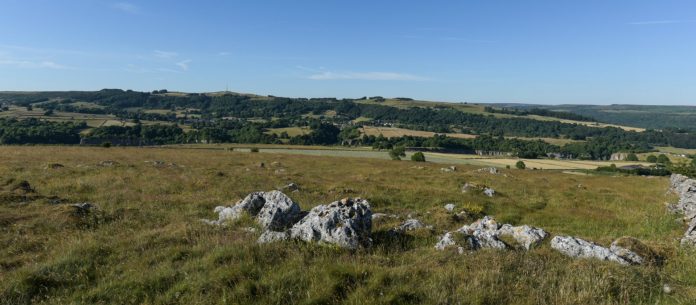The National Trust has purchased 186 hectares (460 acres) of wildflower-rich farmland in the Peak District – securing a potential lifeline for plunging butterfly and bee populations.
The National Trust has purchased 186 hectares (460 acres) of wildflower-rich farmland in the Peak District – securing a potential lifeline for plunging butterfly and bee populations.
As Britain marks National Meadows Day, the conservation charity reveals details of a £2.15million deal to secure the equivalent of 260 football pitches worth of wildflower-rich hay meadows and wildlife rich grassland.
The £2.15 million purchase is the largest farm land acquisition by the charity since it bought Trevose Head in Cornwall in 2016.
The Trust was able to raise the money for the land in the heart of the White Peak thanks to legacies left to the Trust by generous supporters. It will now work with partners to join up 1,342 hectares (3,316 acres) of nature friendly landscape.
The 80 hectares (198 acres) at High Fields at Stoney Middleton and the 106 hectare (262 acre) farm at Greensides near Buxton are home to the most diverse range of grasses and flowers, plus an enormous range of insects and invertebrates, small mammals and birds, creating an eco-system that supports a complete food web.
These types of species rich grassland need protecting because of the massive decline between the 1930s and 1980s when 97 per cent were lost due to the intensification of farming. This decrease has continued in areas like the Peak District, despite its National Park status.
Jon Stewart, General Manager for the National Trust in the Peak District said: “Both farms support unusually large areas of hay meadows and flower rich grassland which are not just beautiful to look at, but are important habitats for wild plants and insects in particular.
“This is testament to the generations of farmers that have cared for them, farming them traditionally and in tune with nature.
“Whilst we cannot be certain of the impact of post-Brexit support for farming and land management, we do know the White Peak is an area that could be farmed more intensively; and by buying this land we have the opportunity to conserve and enhance what is there and work with other farmers and land managers to contribute to caring for the wider landscape and ensuring connectivity.”
The unusual geology of the White Peak landscape and its acidic, neutral and calcareous soils provides the ideal conditions for a huge variety of flora to thrive to include the vibrant early purple orchid; yellow mountain pansy; buttery yellow cowslips; bright yellow common rock rose; frothy white pignut and dark purpley/blue bilberries.
These in turn make the perfect home for many different invertebrates such as bees and butterflies like the common blue; birds such as meadow pipits and skylarks and other animals such as brown hare and the protected great crested newt.
Rare examples of limestone pavement are also a feature on both farms, which supports many ferns and wild flowers. High Fields also has a few dewponds, originally created as watering holes for livestock, which now provide wetland habitat for the newts.
The variety of wildlife and plants is not only helpful to farmers, but enjoyed by other countryside users.
Patrick Begg, Outdoors and Natural Resources Director for the conservation charity said: “The Peak District is a really special part of the country’s landscape, and was the first National Park. It is valued not only by the people that live there but the 12 million visitors that enjoy its varying landscapes each year.
“Protecting and enhancing the best sites like High Fields and Greensides and making habitat links to the wider farmed landscape is what we need to do across the UK if we are to restore some of the nature and wildlife we have lost. The opportunity is there if we recognise the need and work with our neighbours and partners.”
The first job for the Trust will be to put into place a plan for managing the land in the short term. It’s likely that the land at High Fields will be grazed by cattle to restore and maintain the rich variety of flora and fauna, and at Greensides there is the potential for more focus on its special hay meadows.
Dan Abrahams from Natural England commented: “We are delighted that the National Trust has acquired these two highly significant areas of land within the White Peak. This is probably the largest acquisition in the White Peak by a conservation organisation, since the establishment of the Derbyshire Dales National Nature Reserve in the 1970s and 80s.
“These acquisitions are both ideally located to protect and extend the outstanding wildlife interest of the White Peak. One forming a unique ring-fenced farmstead of the highest conservation value, whilst the other a key part of the wildlife-rich landscape adjacent to Longstone Edge. We look forward to working closely with the National Trust over the coming years to maximise the potential of these sites.”
Jon concluded: “We’ve only been able to secure these two precious and rare areas of farmland on the White Peak plateau thanks to generous legacies – this is the type of landscape we’d never be able to protect without the help of our supporters. For all of us who love and value what is most special and beautiful about our countryside we owe them a huge debt of gratitude.







